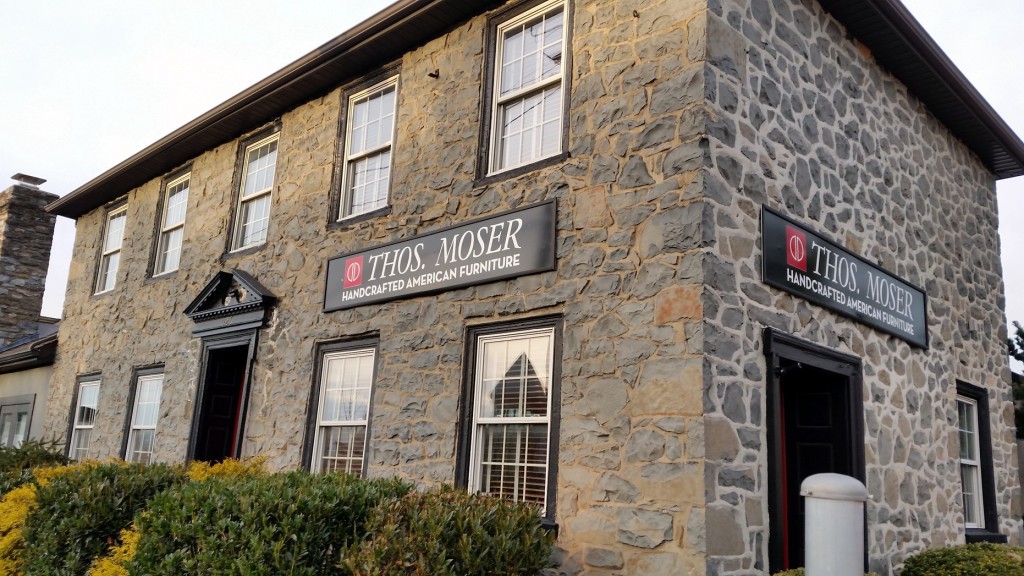
In front of Tredyffrin Township Planning Commissioners on Thursday night was the Preliminary Land Development application for 625/629 East Lancaster Avenue in Wayne. Developer Summit Realty Advisors submitted a plan which demolishes the historic 18th century Covered Wagon Inn to construct a new CVS Pharmacy with drive-through and parking.
I attended the Planning Committee meeting and wanted to update on the project. But first as means of full disclosure, when it comes to historic preservation, I am biased. For the last decade I have served as president of Tredyffrin Historic Preservation Trust, (www.tredyffrinhistory.org) whose mission is to “preserve and protect historic and cultural resources in Tredyffrin Township”, chair the Annual Historic House Tour and own one of the oldest houses in the Tredyffrin Township.
On to the update: Presenting the redevelopment application on behalf of the developer was real estate attorney Alyson Zarro, real estate attorney with Exton firm Riley Riper Hollin Colegreco. (Interestingly, Zarro’s educational background includes a BA in History and a MA in Preservation Studies in addition to a JD). Summit’s preliminary redevelopment plan was presented to the Planning Commissioners by project engineer Joel Dellicarpini of Bohler Engineering.
According to Google Maps, the proposed redevelopment site is approx. 1.73 acres (75,358 sq. ft.), a significant redevelopment parcel. (Click here to see the aerial view of the property and note the small building in lower right corner is the Covered Wagon Inn). The historic Covered Wagon Inn is not located in the center of the property but rather its location is at the edge, on the far corner. A tiny speck on the aerial map, the historic building is only 1200 sq. ft. in size (on the 75,358 sq. ft. parcel).
Delicarpini showed the preliminary architectural drawings for the large CVS pharmacy and its drive-through. Unlike other CVS buildings, this structure would fit its surrounds and the engineer was proud to point out the short stone wall design feature as somehow that would make up for the destruction of the 250-yr. old Covered Wagon Inn.
Following Delicarpini’s presentation, there was much discussion from the Planning Commissioners regarding the project. Much to my surprise, many of the comments centered on the demolition plans and wasn’t there a different way that would allow the historic building to remain. The engineer repeatedly stated that they had ‘tried’ in the design phase, but that leaving the Covered Wagon Inn would somehow impede on their ability to have a drive-through!
Once public comments were permitted, I immediately launched into an impassioned plea to the Planning Commissioners to save the old Covered Wagon Inn. I gave the history of the township’s 2003 Historic Resource Survey which was to have been the basis for historic preservation ordinance. I was on the township’s HARB at that point and involved in the selection of the 350 historic resources that are part of the survey. The vast majority of the resources are personal residences with a handful of commercial buildings – including the Covered Wagon Inn!
In my appeal, I revisited the demolition of the 18th century Ann Pugh
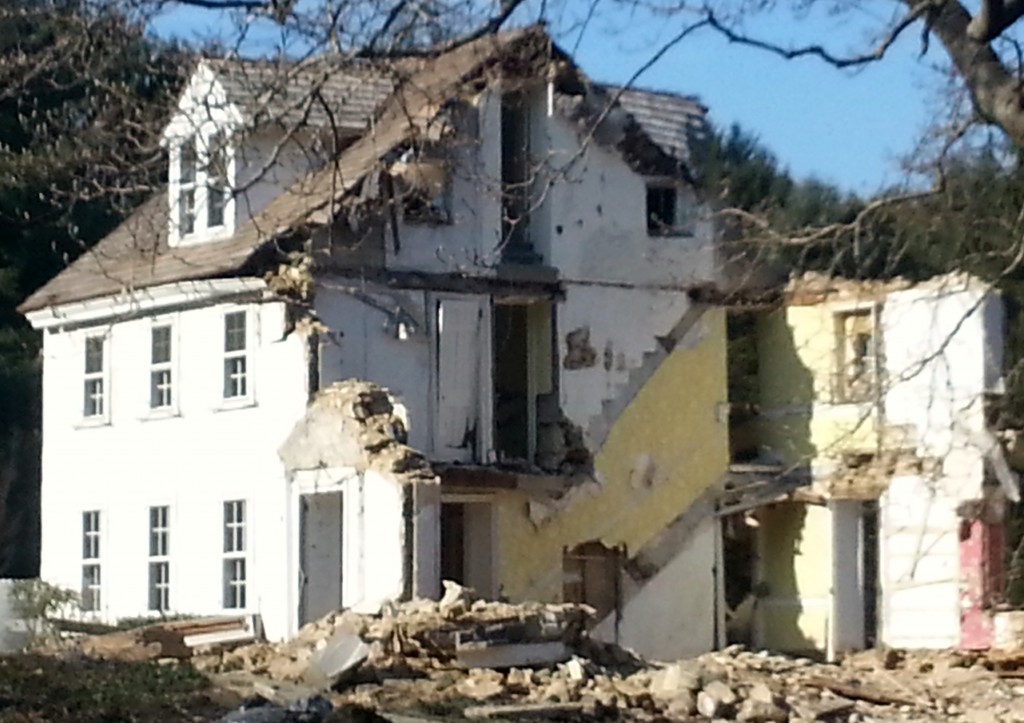
18th c Pugh Road House demolished January 2014
Farmhouse in January 2014. It was my personal hope that its demolition would have spurred local legislation to protect our historic properties. Sadly, in the intervening two years, nothing has changed and all historic properties continue to remain at risk. I explained that because Tredyffrin Township has no ordinances to protect its historic properties, there is nothing to prevent Summit Realty Advisors from demolishing the Covered Wagon Inn.
Of the seven Planning Commissioners, it was remarkable to have so many of them understand and appreciate my passion for historic preservation and indicate support the saving of the Covered Wagon Inn. I want to personally thank four of the Planning Commissioners — Chair Tory Snyder, Vice Chair Bill Rountree, David Biddison and Scott Growney for their support! Snyder, a land use planner, Rountree, a civil engineer and Biddison and Growney , both real estate attorneys, all know that legally the developer ‘has the right’ to demolish the historic building yet each asked that they look for a way to save it. I know that the Planning Commissioners hands are tied – their decisions have to be based on the existing township zoning ordinances. Without a historic preservation ordinance on the books, their job is difficult!
Township supervisor Murph Wysocki attended the Planning Commission meeting as the Board of Supervisor liaison. I have attended many, many Planning Commission meetings over the years and I have never known a sitting supervisor to take the microphone and offer his personal opinion on a land development project, until this meeting. Wysocki was clear that he was not speaking as a supervisor but rather as resident. As a retired real estate attorney, Wysocki completely understands the ‘rights of the developer’ in this case but he too appealed to Summit Realty Advisors to come up with a way to save the old Covered Wagon Inn. A former board member on Tredyffrin Historic Preservation Trust and a sponsor of the Annual Historic House Tour, Murph appreciates the importance of historic preservation in this community and I thank him for his support!
The Covered Wagon Inn is a physical link to our past. Yes, we’ve all heard that before. But it’s not just about saving an old stone building, but about saving the layers and layers of information about our lives and those of our ancestors. Without that, we’d erase the stories of our past, as if the people came before us never existed.
Historic buildings like the Covered Wagon Inn in Strafford play a special role in creating the distinctive character of our community. Historic places matter because they help tell the story of who we are and where we come from. As suburban sprawl and roadside development make more and more places look the same, it should be more important to preserve the history that makes this community special.
The Covered Wagon Inn at the corner of Old Eagle School and Lancaster Avenue stands at the crossroads of Radnor Township, Delaware County and Tredyffrin Township, Chester County. Do we really want the ‘gateway’ to our historic 300 year-old township replaced with a drive-through CVS pharmacy? Where will it stop?
So what is the next step … where do we go? There were a number of Summit Realty engineers, staff and legal counsel in attendance at the Planning Commission meeting. They heard the Planning Commissioners, a supervisor, myself as president of a historic preservation organization and several other community members appeal to the developer to come up with a plan that would save the Covered Wagon Inn. Time will tell to see if they got the message.
Because there is no historic preservation ordinance opposing the demolition of the Covered Wagon Inn, it may take public input to persuade the developers. I will be sending the link to this post (and the last post with its many comments) to the president of Summit Realty Advisors, John Zaharck as well as the project engineers and legal counsel. In addition the links will go to the Tredyffrin Township Board of Supervisors, Township Manager Bill Martin, Planning Commissioners and PA State Rep Warren Kampf (R-157).
—————————————————–
What can you do to Help Save the Covered Wagon Inn –
A Facebook page, ‘Save Covered Wagon Inn’ was set up at: https://www.facebook.com/SaveCoveredWagonInn Created less than 24 hours ago and there are over 430 Likes. Please join the growing list of supporters.
Continue to leave your comments here on Community Matters. Not everyone is on Facebook and because I am sending the link to this post to our elected officials and developer contacts, they will your comments here.
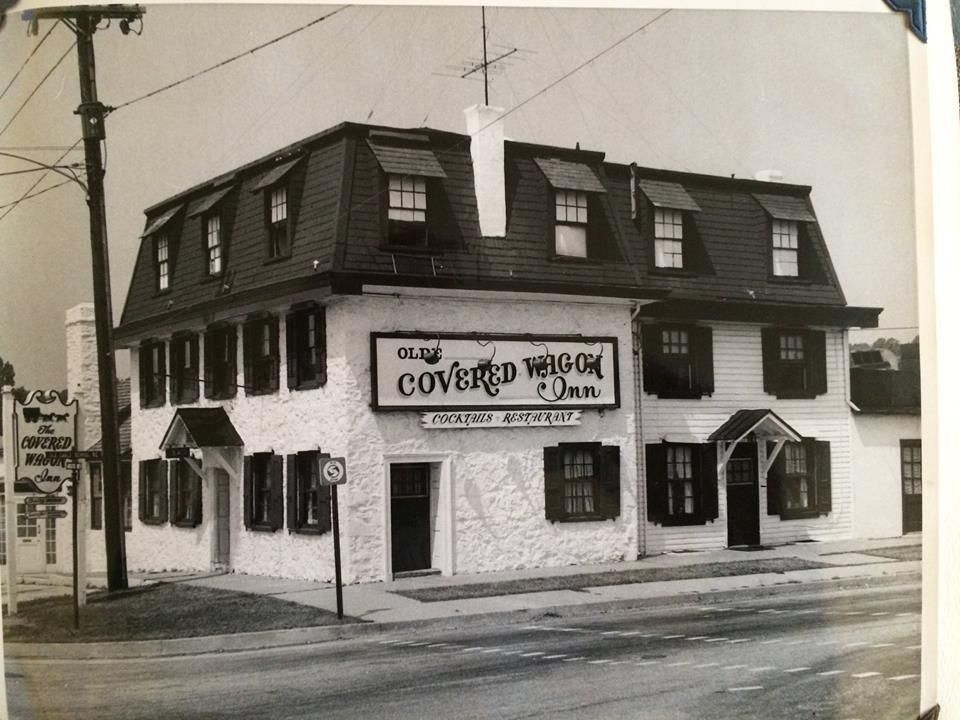
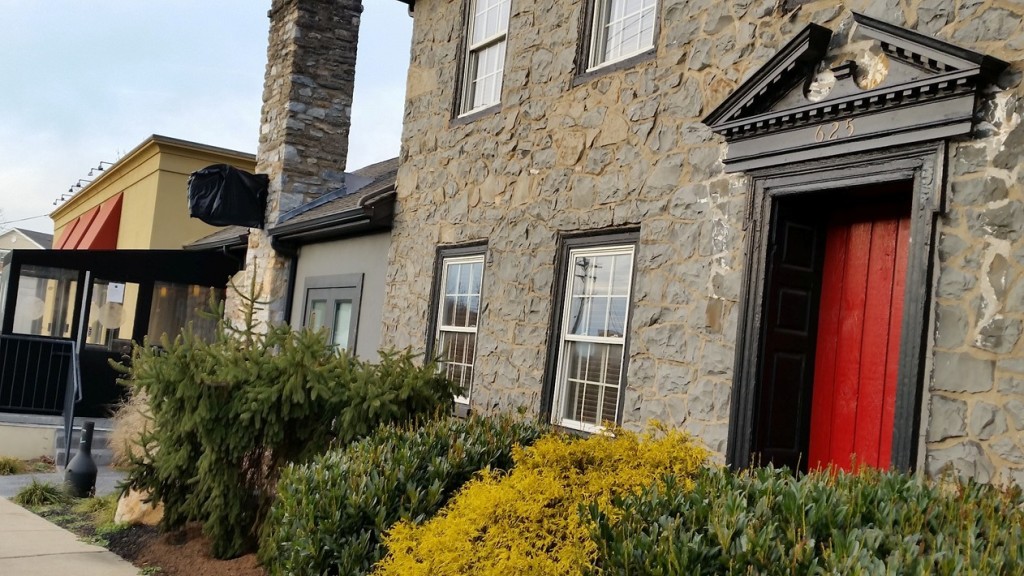
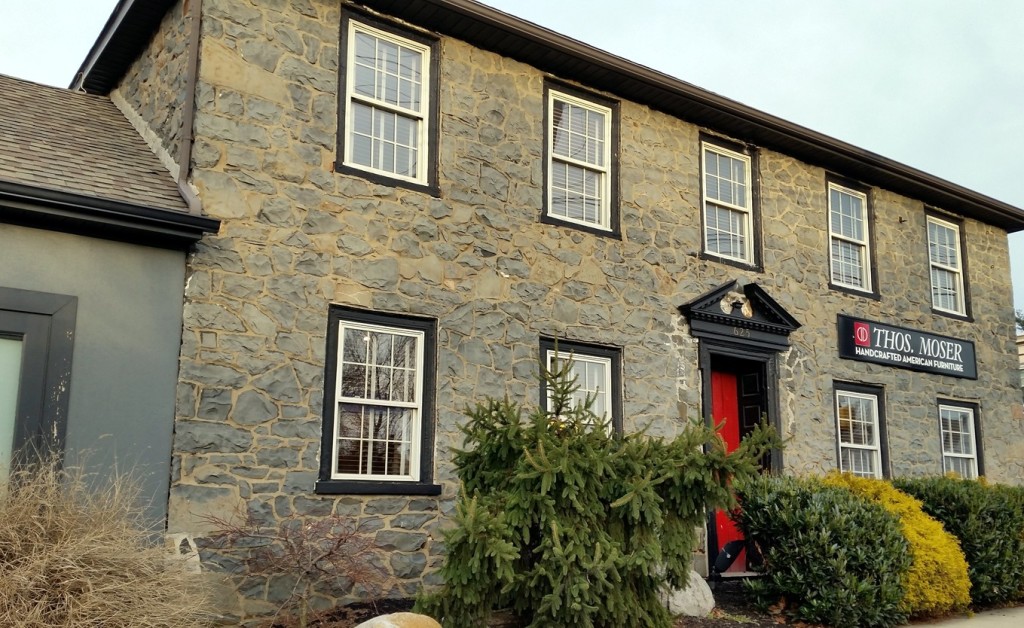
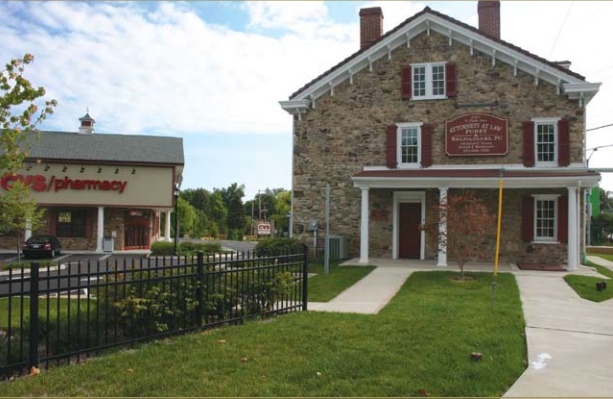
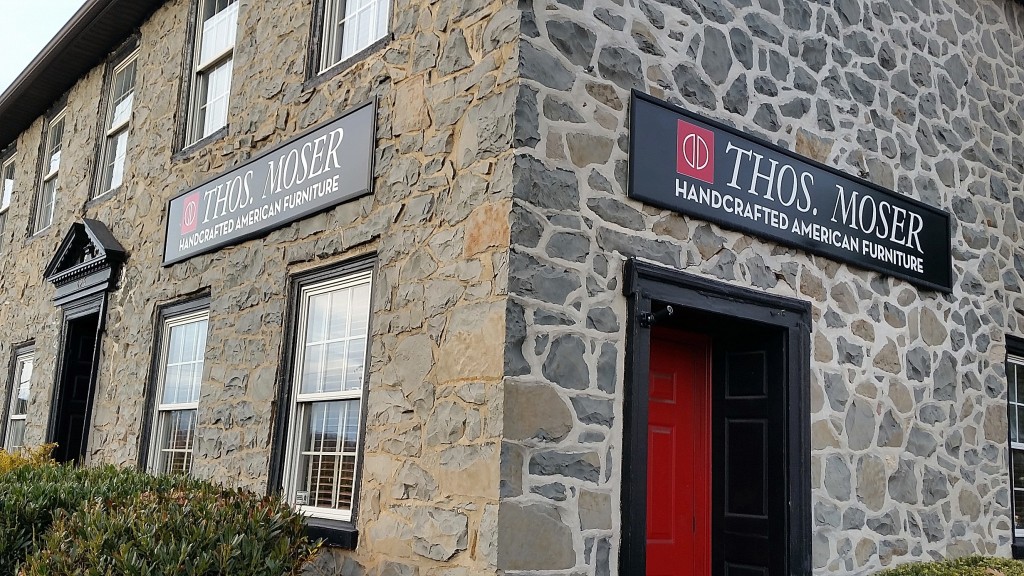
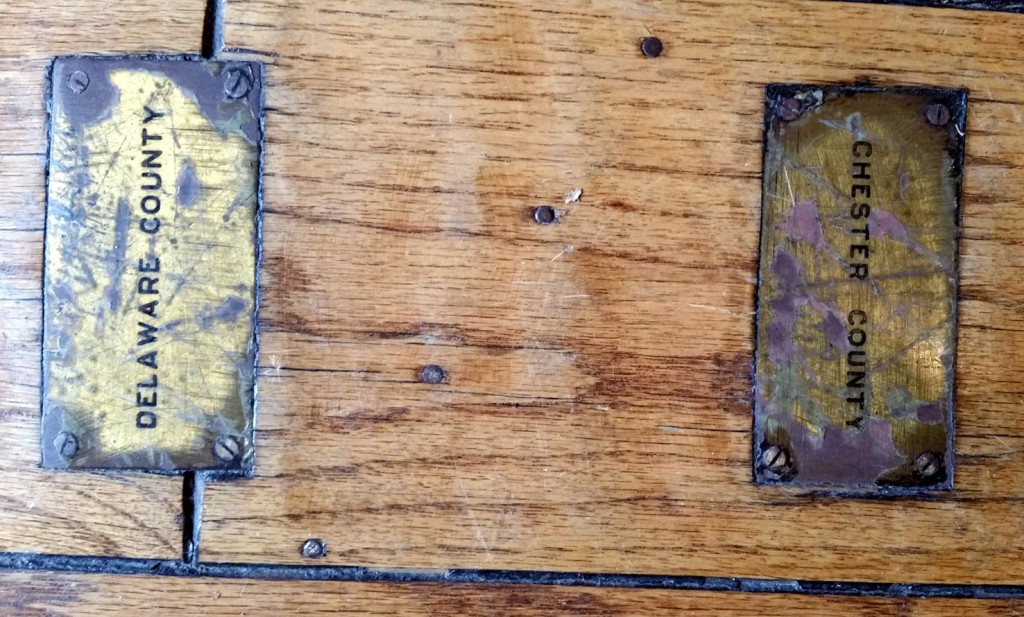
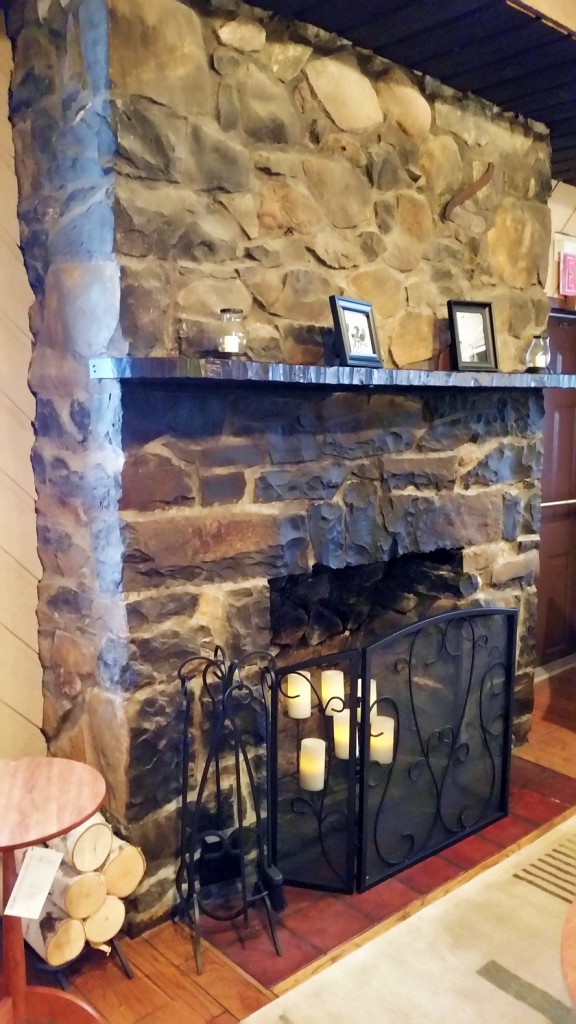
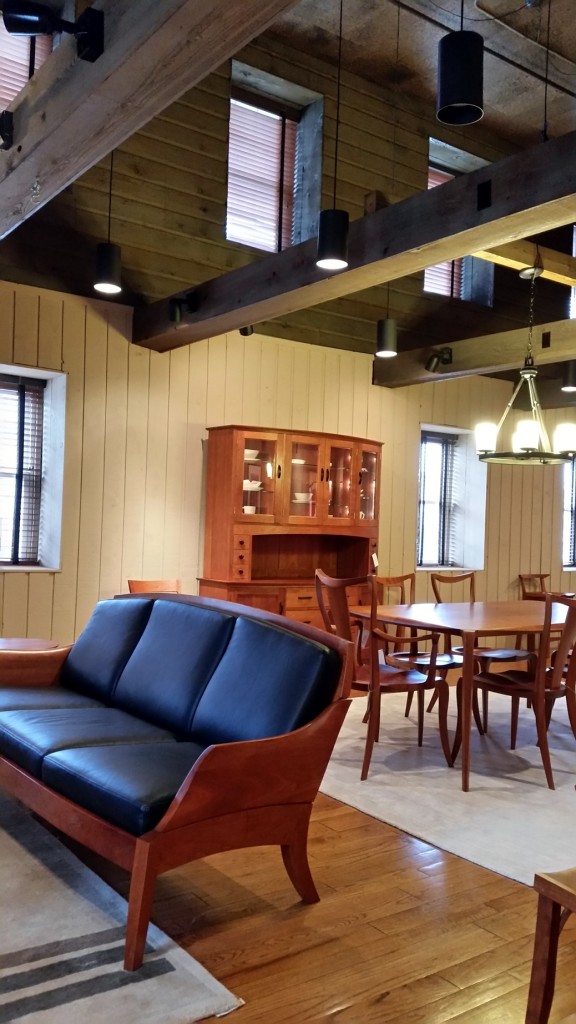




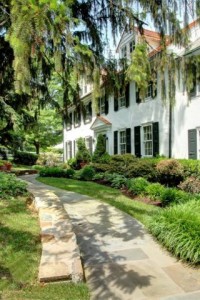

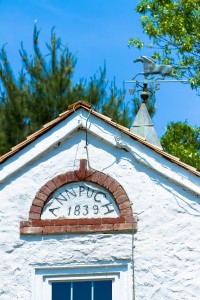

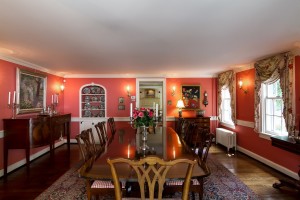


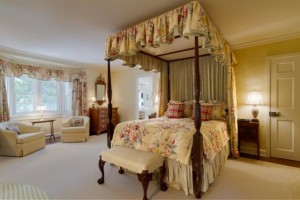
 When I was looking for houses for the 9th Annual Historic House Tour last year, there wa
When I was looking for houses for the 9th Annual Historic House Tour last year, there wa s a beautiful 18th century home at 523 Pugh Road in Wayne that was for sale. The stately home, known as the Ann Pugh Farm, has its early roots in the 1700’s. The stone farm house, garage, barn and springhouse were all wonderfully restored and and 2.2 acres of beautifully landscaped lawn.
s a beautiful 18th century home at 523 Pugh Road in Wayne that was for sale. The stately home, known as the Ann Pugh Farm, has its early roots in the 1700’s. The stone farm house, garage, barn and springhouse were all wonderfully restored and and 2.2 acres of beautifully landscaped lawn. , certainly a significant price tag. In less than a month after the purchase, the house is being demolished.
, certainly a significant price tag. In less than a month after the purchase, the house is being demolished.